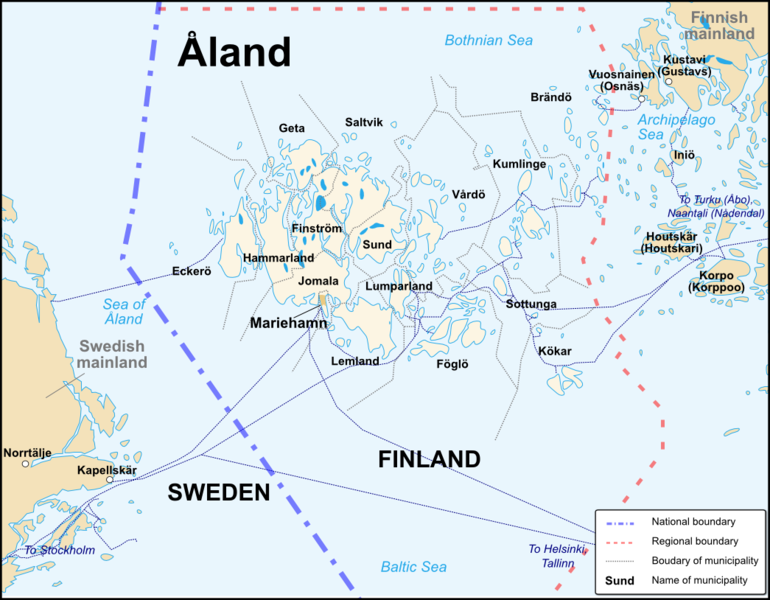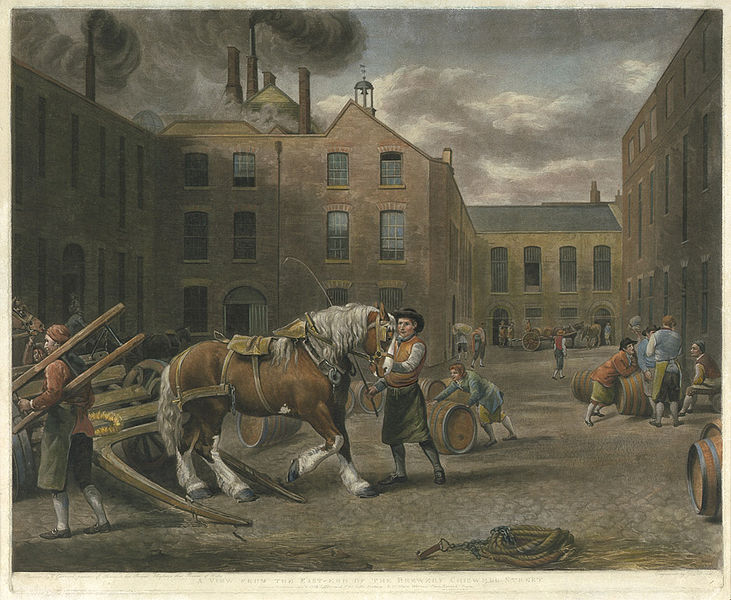Sometimes one new artifact or historical find can lead to many different avenues of study. It can answer some questions, but also create even more. And sometimes, it can change the way we do things in the present.
In 2003, a shipwreck was discovered in the Baltic Sea near the Aland Islands off the coast of Finland, but it wasn’t until 2010 that divers finally visited the wreck and found some interesting cargo.

The Aland Islands in the Baltic Sea between Sweden and Finland. Source: https://en.wikivoyage.org/wiki/File:Åland_Political_Map-en.svg via Wikimedia Commons
- The name of the ship, the route it was taking, where it originated and the year it sank are still mysteries, although there may be clues in parts of the wreckage that remains unexplored. It’s estimated that there are approximately a hundred thousand wrecks in the Baltic Sea, only a fraction of which have been investigated.
- Ceramics found in the wreckage date from 1780-1830.
- Forty-six of the 186 intact bottles of champagne, identified by branding in the cork, came from the Veuve Clicquot champagne house in Reims, France. Founded in 1772, they are still open for business, selling high end champagne with a distinctive yellow label.
- Scientists spent several years studying the chemical properties of the wine, eventually including a taste test. Although some of the carbonation had seemingly escaped through the corks, the wine had not become vinegary.
- The wine is much sweeter than most wine that is produced today. Apparently in the 19th century, Russians preferred their wine and champagne extra sweet, even to the point of adding sugar to their wine at the table.
- It also had a lower alcohol content than today’s wine. Not sure what’s up with that.
- The water pressure and darkness 165 feet below the surface, as well as a consistent temperature of 35-39 degrees Fahrenheit, is apparently a good way to age wine. The Veuve Clicquot champagne house is now experimenting with aging some of their wine that way, and will compare it to the same wine that was aged in the more traditional cellar.
- There were traces of arsenic in the wine, but that was probably from pest-control measures in the vineyards.
- Some of the wine bottles were from the Juglar champagne house, which was absorbed into another company, Jacquesson, in 1829.
- They also found five bottles of beer in the wreck. One bottle broke on the divers boat, and researchers used two of the bottles for chemical analysis. They weren’t as well preserved, as seawater had seeped into the bottles, and there was evidence of bacterial activity.
- The fact that the beer was bottled, when most beer was kept in wooden casks, may indicate that it was a higher quality, more expensive, beer. The origin of the beer was traced to Belgium.

A View from the East-End of the Brewery Chiswell Street; Schabkunstblatt about 1792. Painted by G(eorge) Garrard. Engrav’d by W. Ward bzw. by R(ichar)d Earlom. Published … 1792 by G. Garrard & W. Ward bzw. London, … 1791 by John & Josiah Boydell. Via Wikimedia Commons
- Stallhagen brewery, with exclusive rights to the research results, used the chemical analyses to produce Historic Beer 1842 (which had a limited production and high price) and Historical Beer 1843.
- The divers also found spices (black and white peppercorns, coriander seeds), olives, coffee beans and preserved fruit. Other than the fact that they were recognizable, I found no mention of how well they survived their stay at the bottom of the sea.
There was a lot of media interest in this story. A quick internet search will show many articles in a wide variety of periodicals about these finds. My personal favorite was “The Quest to Produce the World’s Oldest Shipwreck Beer” by McKenna Stayner, in The New Yorker.
Maybe all that’s necessary to bring history to a wider audience is alcohol.
